During my trip to Tuscany, my Aunt Dianna had a surprise planned for me and my cousin Skye—a special workshop in Florence. She kept the details a secret, so I had no idea what to expect until we arrived at the doors that day. Given Aunt Dianna’s adventurous spirit, I half-expected it to be something like a sketching class with a nude male model—an idea I wasn’t entirely sure how to feel about! But to my surprise and relief, we walked into the elegant Aquaflor, where we were about to embark on a perfume blending workshop.
Perfume has always held a special kind of enchantment for me, a passion that traces back to when I was just seven years old, sneaking spritzes of my Grandma Jessie’s fragrances when she was out of the room. I was mesmerised by the beauty of those delicate glass bottles, each one a tiny work of art that seemed to hold a world of elegance within it. Their scents felt like whispered secrets of grace and mystery, lingering softly in the air.
Grandma Jessie would give me all her old perfumes when I was young, and with great care, I would line up those half-used bottles on my bedside table, arranging them as if they were precious treasures. I took immense pride in each bottle, adoring the way they caught the light and made me feel like one of those elegant ladies I would watch and admire in the city. This early introduction to perfume sparked my lifelong love for the artistry of fragrance.
For me, every bottle of perfume holds a story, a memory, or a spark of inspiration waiting to be discovered. And in Florence, there’s something uniquely enchanting about how history, landscape, and memory intertwine seamlessly within each fragrance that is curated within the city. When I breathe in one of the mindfully crafted fragrances I’m not just experiencing a scent, but the echoes of ancient gardens, the warmth of sunlit stone streets, and the romance of moonlit terraces. It feels as though each drop carries the poetry of Italy within it, capturing the soul of the region.
Florence perfumes transport me to sun-drenched afternoons, where wildflowers sway on the green Tuscan hills in a gentle breeze, to strolls along cobblestone streets, where rose vines cascade over old walls. Each ingredient—from the bright and delicate notes of bergamot to the sensual embrace of jasmine—is chosen with a passion that mirrors the artistry and heart that infuses every corner of Italian culture.

Walking to our workshop, I cant help but notice how Florence is a city that awakens the senses at every turn—its cobblestone streets carry the whispers of history, its galleries echo with the colours of the Renaissance, and its cuisine fills the air with aromas that linger in the soul.
Nestled in the heart of this timeless city, tucked away in a 16th-century palazzo, is a place where the art of scent takes on a life of its own—Aquaflor Firenze. This is to be our artist workshop for the next two hours.
Stepping through its heavy wooden doors, I felt as if I had entered another world—a sanctuary of fragrances and alchemy, where perfume isn’t just crafted, but dreamed into existence.
"Blending essential oils into natural perfumes is like capturing whispers of the earth—each drop a delicate brushstroke, painting memories of wildflowers in the wind, sunlight filtering through ancient trees, and the lingering warmth of petals kissed by the rain."
The air inside was thick with the scent of mystery and possibility. Hundreds of delicate glass bottles lined the walls, their golden liquids capturing the essence of faraway places, secret gardens, and sunlit orchards. Each perfume seemed to hold a story waiting to be discovered. And today, I was not just a visitor, but a student in this ancient art of perfumery. I was feeling inspired.
Our experience began with a tour of the laboratry followed by an introduction to the rare and precious ingredients that make up these scents—Tuscan lavender, Sicilian lemon, Moroccan jasmine, and Indian sandalwood. The perfumer, a master in her craft, guided us through the process with the same reverence one might show to an ancient ritual. She spoke of each ingredient as if it had its own spirit, its own note in the symphony of the final creation. I inhaled deeply, trying to catch the hidden layers in every vial—spicy hints of bergamot, the warm embrace of vanilla, and the fresh, fleeting sweetness of green tea.


As we moved deeper into the heart of the atelier, it was time to bring together these essences to create my own unique fragrance. She guided us to begin by selecting a top, middle, and base fragrance. The top notes consist of lighter, more volatile materials like citrus fruits, aromatic herbs, and certain spices. These bring a burst of freshness to the blend and help the fragrance rise from the skin, although they are the quickest to fade.
For the middle or heart notes, we chose moderately intense elements like flowers, spices, and lighter woods. These form the core of the fragrance, balancing diffusion and persistence, often defining its olfactory character and adding depth to the composition.
Lastly, the base notes include heavier, denser materials such as woods, resins, leather, and tobacco. These components serve as fixatives, providing the fragrance with its long-lasting quality. They evaporate slowly, grounding the composition with their rich, lingering warmth, allowing the scent to evolve gracefully over time.
I felt like an alchemist, carefully selecting and blending the drops, trusting my instincts and my imagination to guide me. There was something enchanting about the process—an intimate dance between memory and creativity, as if I were capturing fleeting moments and weaving them into an invisible tapestry. With each drop, the scent evolved, shifting from bright and lively top notes to a warm and comforting heart, finally settling into the deep, grounding embrace of its base.

The perfumer encouraged me to listen to the fragrance with my heart, not just my nose—to let it unfold slowly, like the pages of an old book or the opening chords of a favorite song. And in that quiet moment, surrounded by the history and artistry of Florence, I felt deeply connected to the tradition of creating something timeless and ephemeral all at once.
I was drawn to bergamot, rose, oud and sandalwood - I wanted something smokey, deep yet feminine and sensual. For me I love rose and oud together - where the intoxicating blend of rose and oud is a symphony of contrasts—the rose, tender and luminous, blooms with elegance, while the oud’s rich, smoky essence weaves through it, creating a sensual depth that captivates the senses and invokes passion and mystery.
The process of curating a perfume feels almost ritualistic, a reverent dance of measuring, mixing, and layering that brings to life the essence of a moment or place.
In Florence, the enchantment of a rose and oud perfume is like a love letter written in scent—where the delicate, timeless elegance of the rose meets the deep, smoky allure of oud, creating a fragrance that echoes with the romance and mystery of the city’s ancient streets.
When the blend was complete, the final fragrance felt like a reflection of my journey through Florence—a city of contrasts, where grandeur and intimacy coexist in perfect harmony. It was a scent that carried the freshness of Tuscan gardens, the warmth of golden sunlight on rose gardens, and the lingering mystery of history in every alley and archway. A fragrance that whispered the romance and sensuality of secret courtyards and moonlit walks in cobblestone alleys lit up with antique lanterns.
Leaving Aquaflor, my new perfume in hand, I realised I wasn’t just carrying a bottle of fragrance, but a piece of Florence itself—a memory made tangible, a story bottled in glass. It was a reminder that this city is not only a feast for the eyes, but a symphony for all the senses—a place where even the air seems steeped in art and where, with each breath, you can feel the timeless beauty of its soul.
** View all my Tuscan journal entries >>>



